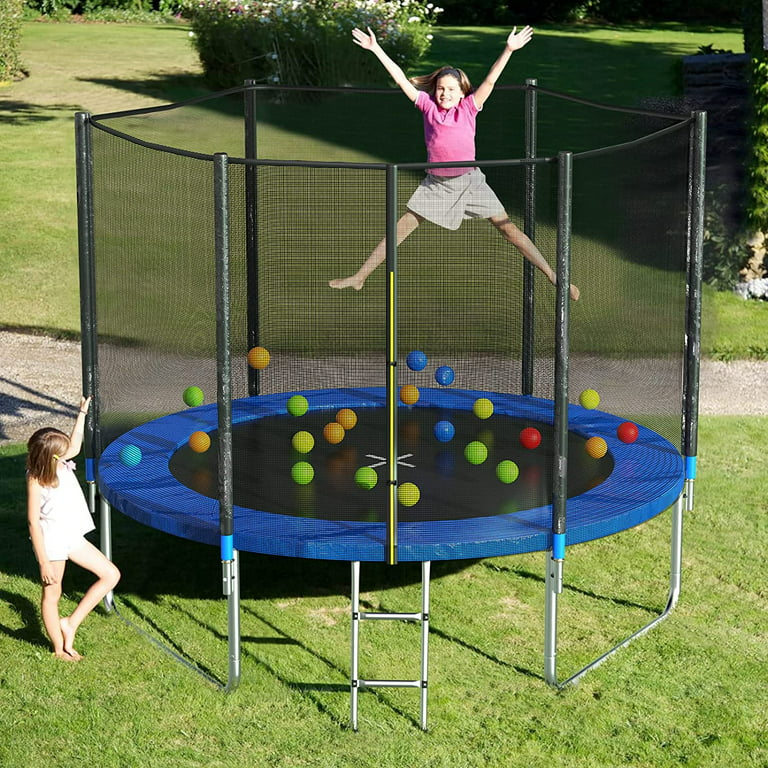
Trampolines, those springy platforms that propel individuals into the air, have become synonymous with fun, fitness, and a dash of adrenaline. In this article, we’ll delve into the world of trampolines, exploring their history, the surge in popularity, the health benefits they offer, safety considerations, and the diverse types that cater to various preferences and needs.
Introduction: The Leap into Trampoline Culture
Historical Origins:
Trampolines have a rich history dating back to the early 20th century. Developed by gymnast George Nissen in the 1930s, trampolines were initially used as training equipment for acrobats and astronauts.
Recreational Rise:
From circuses and gymnasiums, trampolines found their way into backyard settings, sparking a recreational revolution. The allure of bouncing into the air captured the imaginations of both children and adults.
Health Benefits: More Than Just Fun

Cardiovascular Fitness:
Bouncing on a trampoline is an excellent cardiovascular exercise. The rhythmic bouncing engages the heart and lungs, promoting cardiovascular health and stamina.
Low-Impact Exercise:
Unlike high-impact exercises, trampolining is gentle on the joints. The mat absorbs much of the impact, making it a suitable option for individuals who want a low-impact workout.
Improved Balance and Coordination:
Constantly adjusting to the changing surface underfoot enhances balance and coordination. This is particularly beneficial for children as they develop motor skills.
Safety Considerations: Ensuring Secure Bouncing
Quality Construction:
Investing in a trampoline with quality construction is paramount. Look for sturdy frames, durable springs, and a robust mat to ensure the trampoline’s longevity and safety.
Enclosure Nets:
Enclosure nets are crucial for preventing falls and injuries. Most modern trampolines come with safety nets that enclose the bouncing area, providing an added layer of protection.
Adult Supervision:
Children should be supervised while using trampolines. While safety features are in place, having an adult nearby ensures that any potential issues are addressed promptly.
Types of Trampolines: Tailoring Bouncing Experiences
Outdoor Trampolines:
Designed for backyard use, outdoor trampolines come in various sizes. They often feature enclosure nets and are made with weather-resistant materials to withstand outdoor conditions.
Mini Trampolines (Rebounders):
Mini trampolines, also known as rebounders, are smaller, indoor versions. They are popular for fitness routines and provide a compact option for bouncing exercises.
Water Trampolines:
Water trampolines (https://leotoystore.com/collections/trampoline) take the bouncing experience to the next level by floating on bodies of water. They are a favorite at lakes and beaches, combining the joy of bouncing with the refreshing splash of water.
Trends and Innovations: Elevating the Trampoline Experience
In-Ground Trampolines:
In-ground trampolines are installed at ground level, seamlessly blending with the backyard landscape. These trampolines offer a sleek appearance and easy access.
Fitness Trampoline Classes:
Trampoline-based fitness classes have gained popularity. These classes, often conducted on mini trampolines, combine bouncing with aerobic exercises for a dynamic workout.
Interactive Trampoline Games:
Innovative trampoline parks and installations incorporate interactive games. These games use sensors and technology to create engaging experiences for bouncers of all ages.
Trampoline Safety Standards: Ensuring Quality Assurance

ASTM International Standards:
Trampolines are subject to safety standards established by organizations like ASTM International. Compliance with these standards ensures that trampolines meet specific criteria for safety and performance.
Weight Limits and Guidelines:
Trampolines come with weight limits to ensure safe usage. Adhering to these limits is crucial to prevent excessive strain on the springs and frame.
Regular Maintenance:
Regularly inspecting and maintaining the trampoline is essential. Checking for wear and tear, ensuring secure connections, and replacing damaged components contribute to long-term safety.
Trampoline Parks: Bouncing Beyond Backyards
Rise of Trampoline Parks:
Trampoline parks have become a phenomenon, offering expansive bouncing arenas with various features like foam pits, obstacle courses, and basketball hoops.
Safety Measures in Parks:
Trampoline parks implement rigorous safety measures, including trained staff, padded surfaces, and strict guidelines. These measures aim to provide a safe yet exhilarating experience for park visitors.
Social and Recreational Hub:
Trampoline parks have evolved into social and recreational hubs. They host events, fitness classes, and themed nights, attracting individuals and families looking for an active and entertaining outing.
Bouncing Beyond Boundaries
In conclusion, trampolines have transcended their origins as training equipment to become emblematic of joy, fitness, and boundless adventure. From backyard bouncing to the rise of trampoline parks, the culture of trampolining continues to evolve, providing diverse experiences for individuals of all ages. As families invest in trampolines, they’re not just acquiring a piece of equipment; they’re embracing a lifestyle that promotes health, fun, and the simple joy of bouncing. Whether bouncing under the open sky, enjoying a fitness class, or leaping into a foam pit at a trampoline park, the thrill of mid-air suspension remains a timeless and exhilarating experience. Trampolines, with their ability to elevate both spirits and fitness levels, continue to bounce beyond boundaries, leaving an indelible mark on the landscape of recreational and fitness activities.
